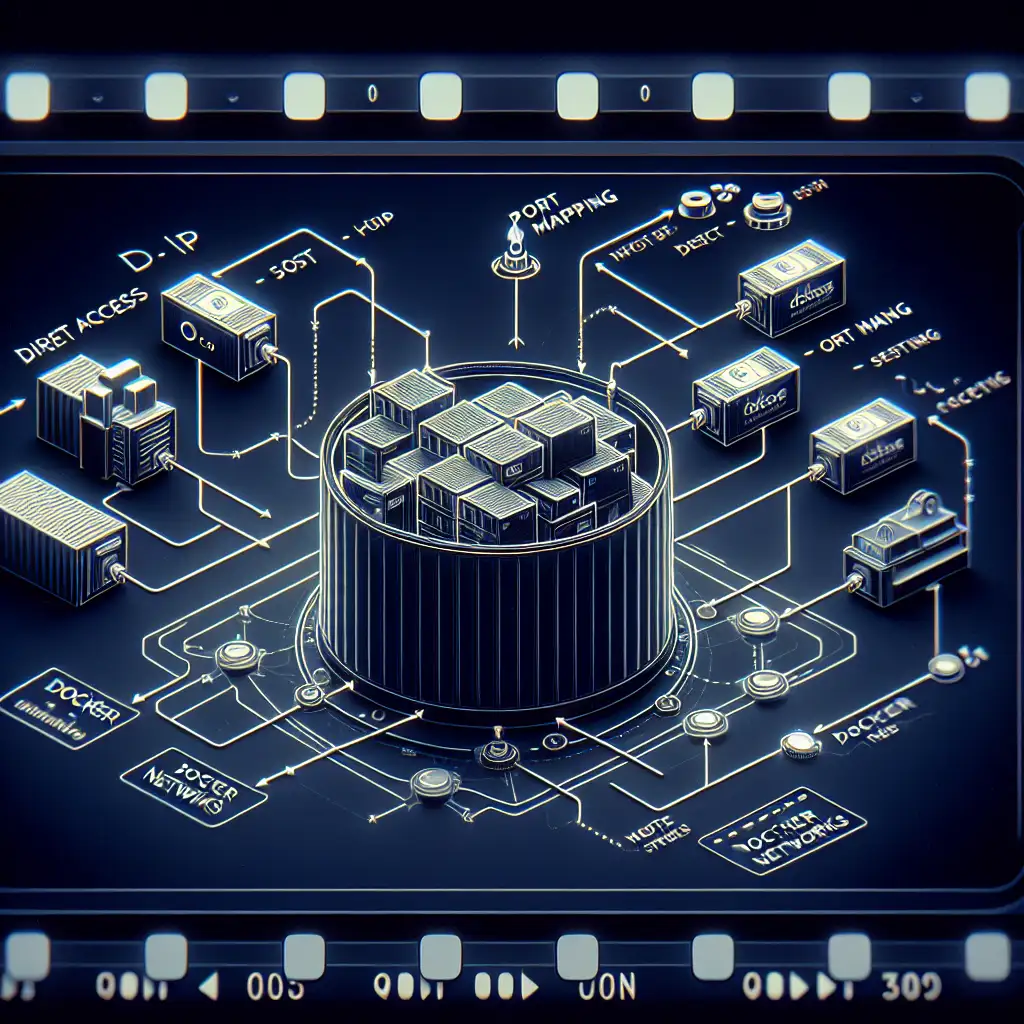Mastering Host Access to Docker Containers: Practical Techniques Beyond Port Mapping
Forget the usual port mapping spiel—let's dig into how you can logically and securely access your container internals from the host using networking tricks and Docker features that most guides skip. This approach opens doors for serious troubleshooting and integration workflows.
When working with Docker containers, exposing ports is the go-to method for accessing services running inside. But what happens when you want direct, flexible, and secure access to a container’s internals without opening ports or compromising host security? Whether you're debugging, monitoring, or orchestrating complex workflows on your development machine, understanding how to bridge the host-to-container gap beyond port mapping is a game changer.
In this post, I’ll walk you through practical techniques to access your Docker containers from the host—no port-forwarding required. We’ll explore Docker networking features, the docker exec command, shared volumes, and some nifty tricks that give you granular control.
Why Avoid Port Mapping?
At first glance, mapping container ports to host ports is simple and effective:
docker run -p 8080:80 my-web-app
This makes your web app accessible on localhost:8080. However, port mapping:
- Can cause port conflicts on the host.
- Exposes ports publicly if using wrong network settings.
- Isn’t always suitable for accessing internal debugging interfaces or ephemeral containers.
- Has limits when dealing with multiple containers running similar services.
Avoiding reliance on ports leads us to more flexible solutions.
1. Use docker exec to Get Inside a Running Container
The simplest way to interact directly with a container is by executing commands inside it:
docker exec -it <container_id_or_name> /bin/bash
This opens an interactive shell right inside the container. No network tunnel needed!
Use cases:
- Troubleshoot running processes.
- Inspect logs locally.
- Run diagnostic utilities.
- Modify configuration files in real-time.
Example:
docker ps
# Suppose container ID is abc123def456
docker exec -it abc123def456 /bin/bash
# Inside container shell now:
ps aux
tail -f /var/log/my-app.log
2. Leverage docker network Inspect & Host-Container Networking
Every Docker container connects to one or more networks. By default, containers sit on a bridge network isolated from your host’s networking stack except via published ports.
You can inspect the network like this:
docker network inspect bridge
Accessing containers via IP addresses
Containers have their own IP addresses within this network. You can ping or connect to them from other containers—but what about from your host?
The catch is: On Linux hosts, you can reach these IPs because the bridge connects to the host kernel network stack. But on macOS or Windows (because of Docker Desktop virtualization), you can't directly reach container IPs easily.
Linux Approach Example
Find the container IP:
docker inspect -f '{{range .NetworkSettings.Networks}}{{.IPAddress}}{{end}}' abc123def456
# Outputs something like 172.17.0.2
Ping it:
ping 172.17.0.2
Direct connections on Linux from host to container IP work out of the box, so tools such as curl connecting directly to internal services (on their normal ports) can be tested without publishing those ports.
3. Use nsenter for Even More Powerful Access (Linux-only)
Sometimes exec isn’t enough—you may want full namespace access as if you were 'inside' the container environment at kernel level.
Install nsenter (comes with util-linux package):
sudo apt-get install -y util-linux # On Debian/Ubuntu hosts
Find container PID:
PID=$(docker inspect -f '{{.State.Pid}}' abc123def456)
Enter namespaces:
sudo nsenter --target $PID --mount --uts --ipc --net --pid /bin/bash
You’re now effectively ‘inside’ the container’s kernel namespaces with root privileges—useful for deep debugging of networking issues or process states that require low-level access.
4. Mount Shared Volumes for Easy Data & Config Access
If you need programmatic access to files or logs generated inside containers without an SSH-like shell session, mount volumes from your host:
docker run -v /host/logs:/var/log/my-app ...
Now any logs written inside /var/log/my-app are immediately accessible in /host/logs on your machine.
Tip: You can even mount config files this way — tweak them live and restart containers on demand.
5. Use SSH Server Inside Container (With Caution)
For some dev workflows, running an SSH daemon inside a container enables remote shell-like access without tweaking Docker commands constantly.
Here's a quick setup outline:
-
Create a custom Dockerfile adding OpenSSH server:
FROM ubuntu:20.04 RUN apt-get update && apt-get install -y openssh-server \ && mkdir /var/run/sshd \ && echo 'root:rootpassword' | chpasswd \ && sed -i 's/#PermitRootLogin prohibit-password/PermitRootLogin yes/' /etc/ssh/sshd_config \ && sed -i 's@session\s*required\s*pam_loginuid.so@session optional pam_loginuid.so@g' /etc/pam.d/sshd EXPOSE 22 CMD ["/usr/sbin/sshd", "-D"] -
Build and run exposing port only accessible via Docker networks (not publicly):
docker build -t ssh-enabled . docker run -d -p 2222:22 ssh-enabled -
SSH into localhost at port 2222:
ssh root@localhost -p 2222
Warning: This approach exposes an attack surface if not firewalled properly; generally better suited for local dev or secure environments only.
Bonus Tips for Advanced Host-Container Interaction
docker cp: Copy files back and forth effortlessly
Want log files or artifacts from inside?
docker cp <container>:/path/to/file ./local/path/
Using socat for custom proxy setups
You can build TCP tunnels from your host into any target service listening only on localhost inside the container by leveraging socat proxies running in privileged mode—great for accessing internal-only debug endpoints without exposing them more widely.
Wrapping Up
Port mapping is just one piece of the puzzle—not always adequate nor secure enough for deeper interactions with your Docker containers. By leveraging native Docker features (exec, network inspection), Linux tools (nsenter), shared volumes, and controlled SSH setups, you gain much richer access patterns tuned specifically for troubleshooting, monitoring, and development workflows.
Understanding these options will dramatically boost your control over Dockerized applications running locally or in complex environments—empowering you to master that critical bridge between host and container without blindly opening ports.
Your turn: Try these techniques next time you’re stuck trying to peek inside a stubborn container! Drop a comment below if you want example scripts or help automating these flows in CI/CD pipelines.
Happy Dockering! 🐳🚢
